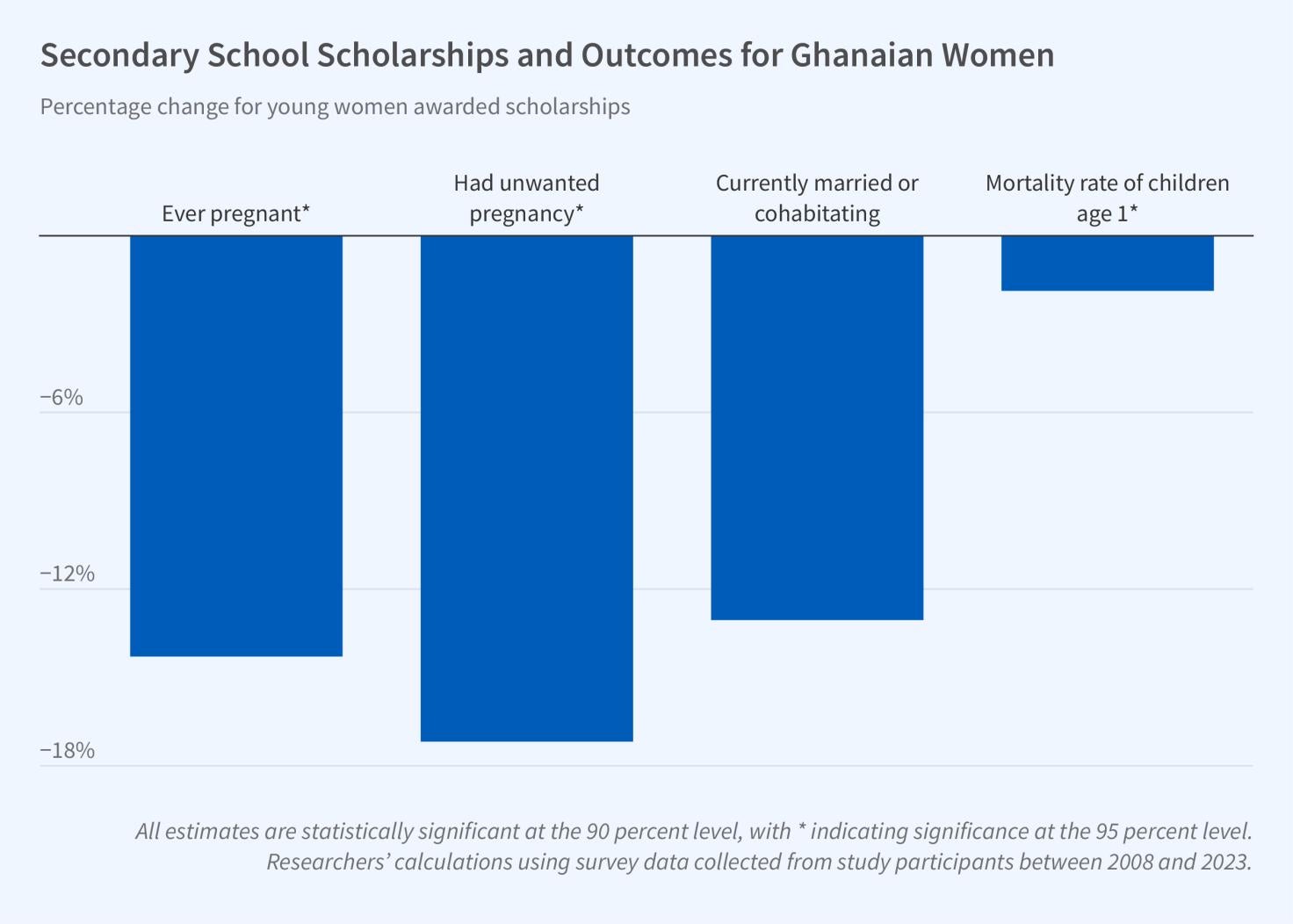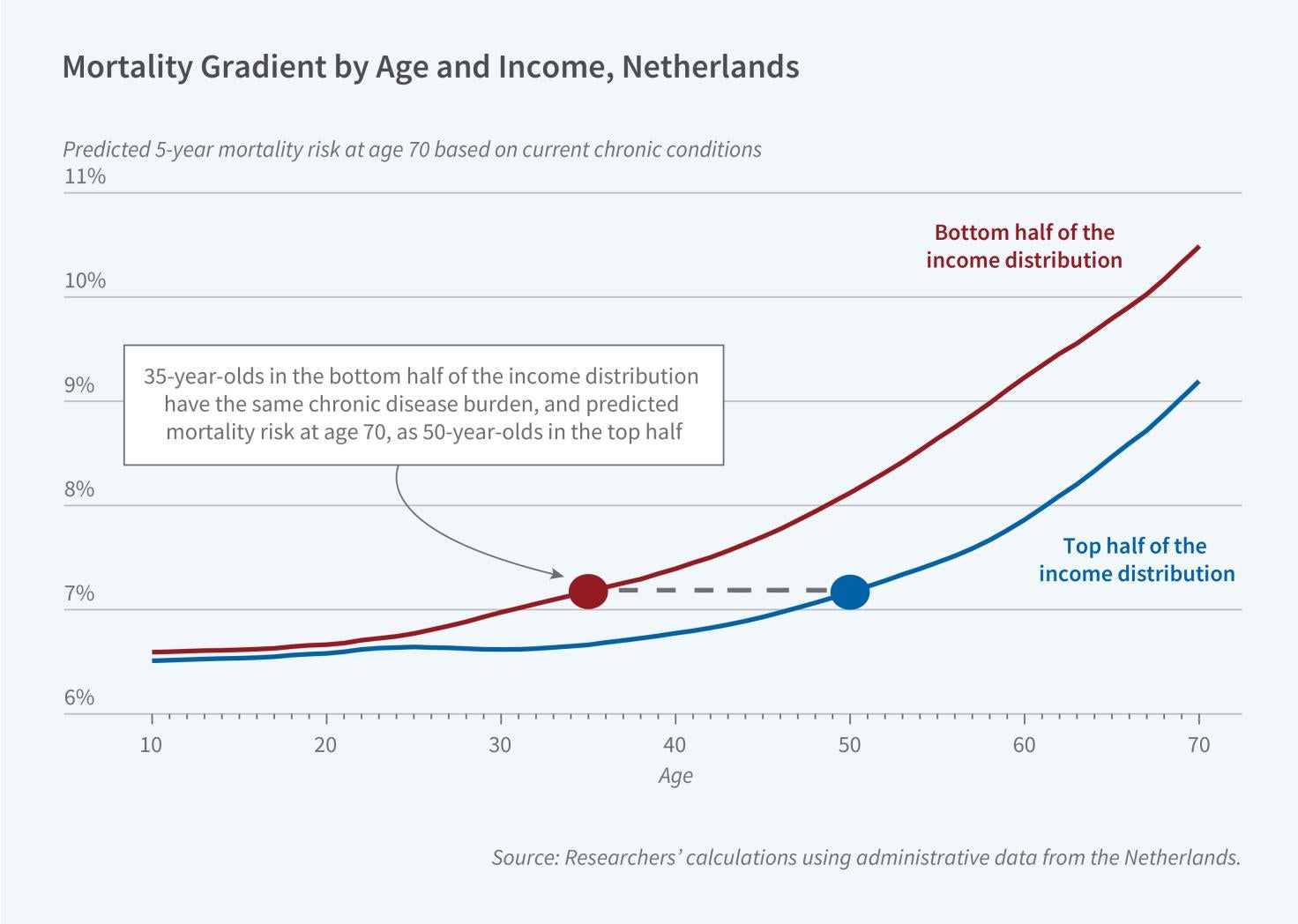National Bureau of Economic Research
Latest from the NBER
New Initiative on Economics of Alzheimer’s Disease
news article
Recognizing the rising toll of chronic late-life diseases as the US population ages, the NBER has launched a multi-year initiative on the economics of Alzheimer’s Disease and Alzheimer’s Disease-Related Dementias (AD/ADRD). The National Institute on Aging (NIA) has awarded the NBER a five-year grant to serve as a Coordinating Center for the Economics of AD/ADRD, focusing on the care, treatment, and prevention of these diseases. The Center is co-directed by neurobiologist Rhoda Au of Boston University, Julie Bynum, a geriatric care specialist at the University of Michigan, and research associate Kathleen McGarry of UCLA; Susan Stewart is the Executive Director. It will coordinate the work of several NIA-funded research…
A research summary from the monthly NBER Digest

Intergenerational Gains from Educating Girls
article
Programs that increase educational attainment in low-income countries can yield lifelong benefits for those who attend school and also pay dividends for future generations. In Intergenerational Impacts of Secondary Education: Experimental Evidence from Ghana (NBER Working Paper 32742), Esther Duflo, Pascaline Dupas, Elizabeth Spelke, and Mark P. Walsh find that in Ghana, the children of women who received scholarships to attend high school display better outcomes both...
From the NBER Bulletin on Health

How Health Disparities Develop over the Lifecycle
article
In the Netherlands, there are striking socioeconomic differences in mortality among older adults, with a 4.4 percentage point (67 percent) higher five-year mortality rate for 70-year-old individuals with below-median income than for those with above-median income. To better understand the role of chronic disease in these health disparities, Kaveh Danesh, Jonathan T. Kolstad, William D. Parker, and Johannes Spinnewijn develop an index of chronic disease burden in The Chronic Disease Index: Analyzing Health Inequalities over the Lifecycle (NBER Working Paper 32577). This index is a measure...
From the NBER Bulletin on Retirement and Disability

Inflation’s Impact on Social Security Disability Program Beneficiaries
article
Social Security Disability (SSD) program beneficiaries, like other consumers, have been negatively affected by inflation over the past several years. In a survey from June of 2023, more than half (59 percent) of SSD program beneficiaries reported higher prices for the disability-related goods and services they need to purchase, and more than one-quarter reported reducing food spending to cover disability-related costs, Zachary Morris and Stephanie Rennane found in Examining the Impact of Inflation on the Economic Security of Disability Program Beneficiaries (NBER RDRC Paper NB23-08).
Using new survey data, the researchers found that 82 percent of beneficiaries reported out-of-pocket expenses related to their disability, with average annual spending of $4,412 and median spending...
From the NBER Reporter: Research, program, and conference summaries

Lessons for Economists from the Pandemic
article
It is an honor to be here today; I owe my love of economics to the Bureau as well as my many friends and colleagues. Marty [Martin] Feldstein was one of the people who made it such a special place. I enjoyed seeing him around the Bureau, learning public finance from him, and briefly serving as his research assistant. I’d sit in his office, in awe of his incredible intellect and economic insights, and be completely distracted by the hilarious cartoons he had framed in his office. My favorite was the one in which Marty is depicted rowing in the wrong direction in a skiff while President Reagan yells “Feldstein!” They all reflected his steadfast willingness to speak his mind, to “speak truth to power,” even to the president of the United States...
From the NBER Bulletin on Entrepreneurship

“Third Places” Boost Local Economic Activity
article
Sociologists have argued that “third places” like cafés, which provide opportunities for individuals to socialize and exchange ideas outside of home and work, improve neighborhood life. But what about the relationship between such places and economic activity? In Third Places and Neighborhood Entrepreneurship: Evidence from Starbucks Cafés (NBER Working Paper 32604), researchers Jinkyong Choi, Jorge Guzman, and Mario L. Small use data on US business registrations between 1990 and 2022 from the Startup Cartography Project to examine whether the opening of a Starbucks in a neighborhood with no previous cafés affects local entrepreneurship...
Featured Working Papers
Heat pumps result in a 90 percent average reduction in home gas use and a 61 percent increase in home electricity use, yielding a 40 percent drop in total energy demand and a 36 percent drop in carbon dioxide emissions, a study by Louise Bernard, Andy Hackett, Robert D. Metcalfe, and Andrew Schein of a heat pump rollout in Great Britain finds.
A full-day universal pre-kindergarten (UPK) program in New Haven, CN, has limited impact on children's academic outcomes, but parents’ earnings increase by 21.7 percent, and each dollar of net government expenditure yields $5.51 in after-tax benefits for families, John Eric Humphries, Christopher Neilson, Xiaoyang Ye, and Seth D. Zimmerman find.
John A. List and Haruka Uchida find that the tendency of early childhood education programs to lose their efficacy after a few years is critically linked to the share of classroom peers assigned to preschool access and that with sufficient numbers of treated peers the classic fade-out effect is muted.
Electric vehicle (EV) tax credits in the US Inflation Reduction Act (IRA) have decreased global carbon emissions and generated $1.87 of net benefits per dollar spent, recognizing that they supplanted other EV credits that were in place before the Act took effect. Compared to a no-credit scenario, the benefits were $1.02 per dollar of spending, according to research by Hunt Allcott, Reigner Kane, Maximilian S. Maydanchik, Joseph S. Shapiro, and Felix Tintelnot.
The 1882 Chinese Exclusion Act, which reduced the number of Chinese workers of all skill levels residing in the US, also reduced the labor supply and the quality of jobs held by White and US-born workers, the intended beneficiaries of the act, Joe Long, Carlo Medici, Nancy Qian, and Marco Tabellini find.
In the News
Recent citations of NBER research in the media
_______________________________________
Research Projects
Conferences
Books & Chapters
Through a partnership with the University of Chicago Press, the NBER publishes the proceedings of four annual conferences as well as other research studies associated with NBER-based research projects.
Videos
Recordings of presentations, keynote addresses, and panel discussions at NBER conferences are available on the Videos page.